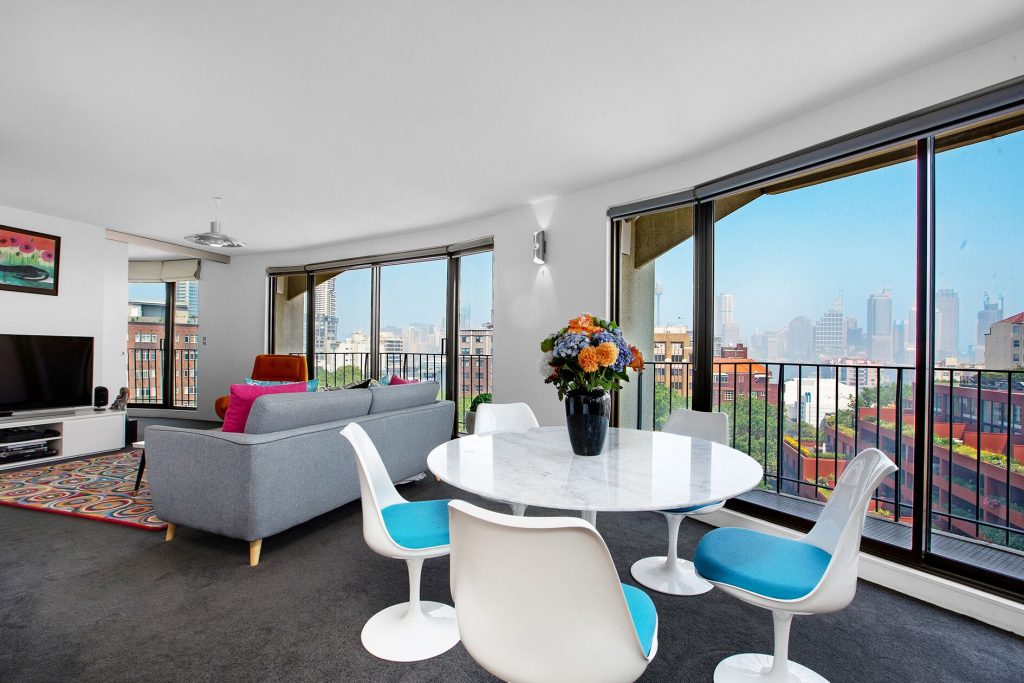The Gazebo, a 1969 groovy landmark

Apartment 1004/2 is currently for sale through Luke McDonnell.
https://www.rwebay.com.au/5192655/
The “swinging 60s” is remembered for being a time of social upheaval.
Protests continued against the Vietnam War, youth rebelled in their clothing styles, with mauve flares and longer shoulder-length hair, pop music such as The Beatles were ubiquitous, the American civil rights movement grew stronger, drugs were prevalent and psychedelic colours proliferated. It was “the Age of Aquarius”, a liquid/flexible water astrological age, as the rock musical “Hair” proclaimed, when humanity takes control of the Earth and its own destiny.
Every social more was challenged or overturned.
As a piece of architecture, a gazebo is defined as “a freestanding structure, open on all sides, often octagonal, built with a view, an ornament in its landscape, providing shade and a place to rest.” And so it is with the Gazebo apartments, a 12-sided former hotel once famous for its jaw-dropping 360 degree views and hip 1960s bright blue and vivid purple-puce cocktail bar.
This apartment block, which takes its name from its design shape, is probably one of the largest “gazebos” ever built. Opened in May 1969, it is now heritage-listed, unusually, for its technical engineering design significance. It incorporates a unique 18-storey construction method, determined by its cylindrical shape and has a radiating concrete frame which determines the floor plan design. Many apartments are wedge-shaped which take advantage of wide-panorama vistas.
It is also an excellent example of a Post-War International Style hotel building. The original owner, Syd Fischer, created the design concept himself and supervised construction after being inspired by similar buildings he’d seen in Chicago, USA.
The current site had formerly been the Cherveralls private hotel, formerly a grand 19th century mansion.
The three main design principles of the International Style were structure, plan and functionalism: it achieved widespread and enthusiastic adoption in the USA and many other countries, hence its name.
Today’s site also incorporates an adjoining rectangular, complementary apartment block with courtyards, once a service station, and was built in 1982, thirteen years later then the main polygon-shaped tower.
The Gazebo’s original 1960s functionalist and funky decor included modern plastic furniture and orange carpet. Its white marble aggregate façade was described at the time as “one of the most spirited additions to Sydney’s skyline for some time”.
The hotel accommodated 500 guests in 200 rooms with a single room costing $90 per night in 2000, including Continental Breakfast. A stunning, heated swimming pool and enclosed roof-top observation deck once commanded panoramic views over Sydney.
Both buildings were successfully upgraded to modern apartments in 2005.
By Andrew Woodhouse, Heritage Solutions





